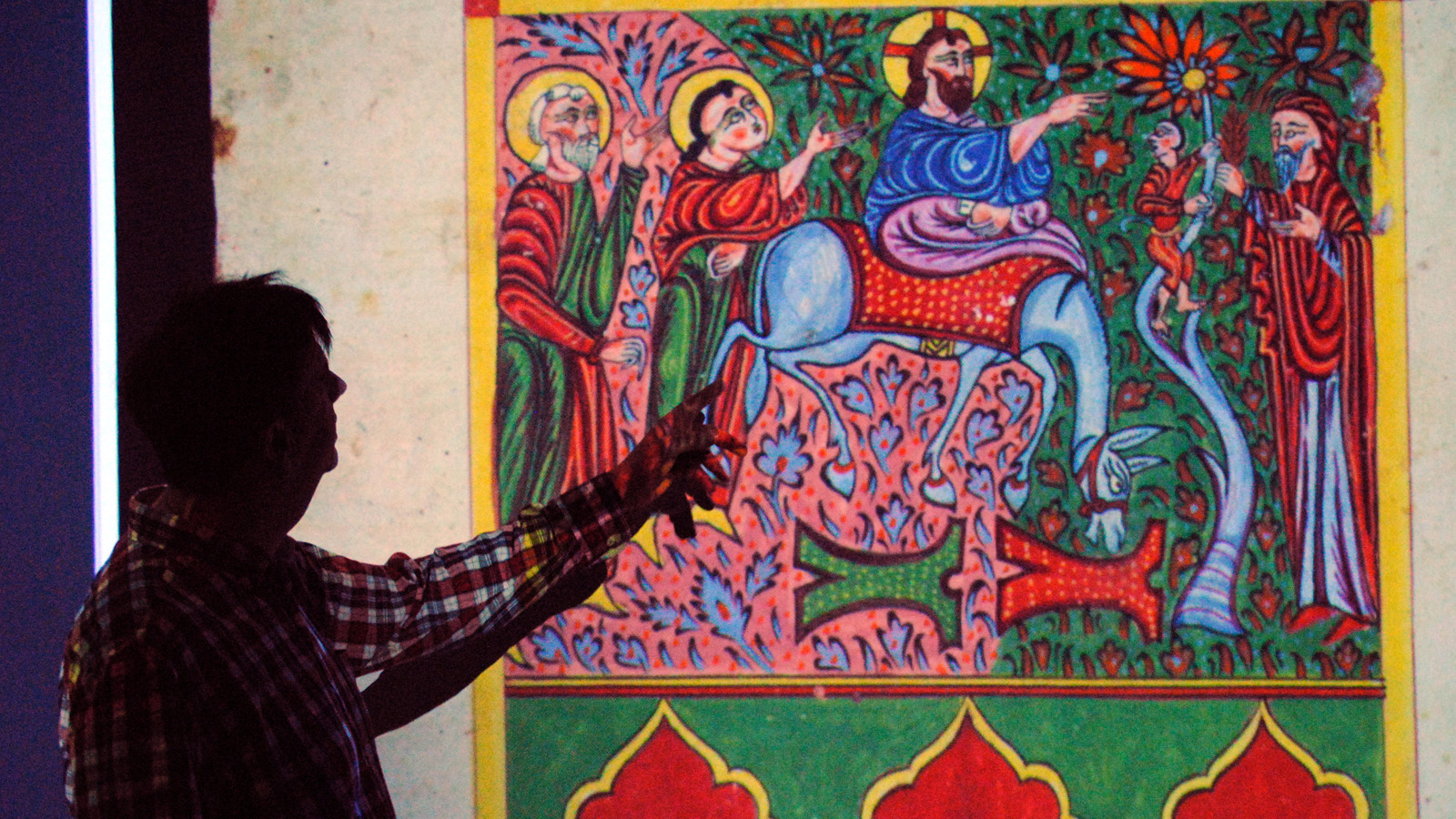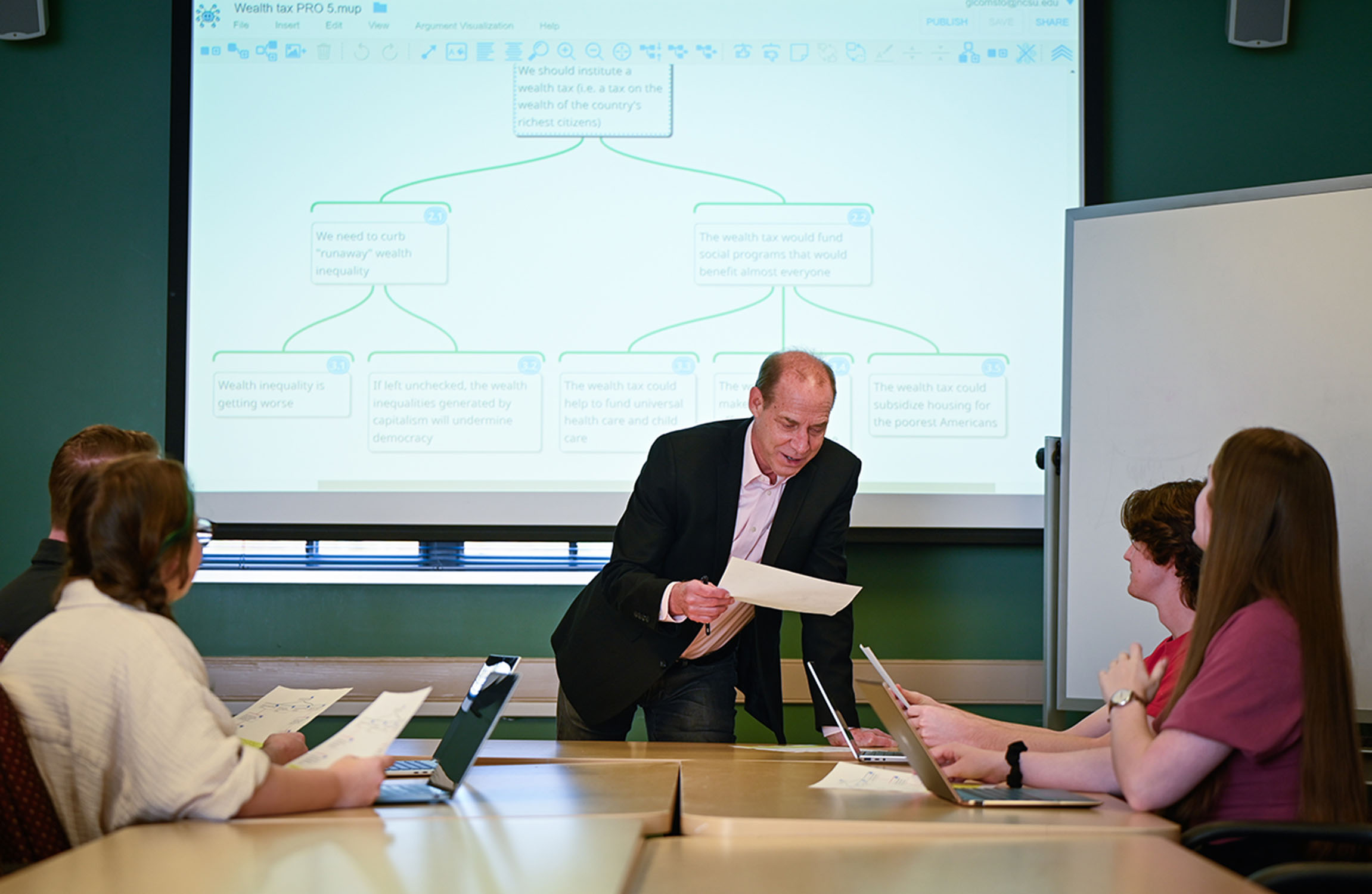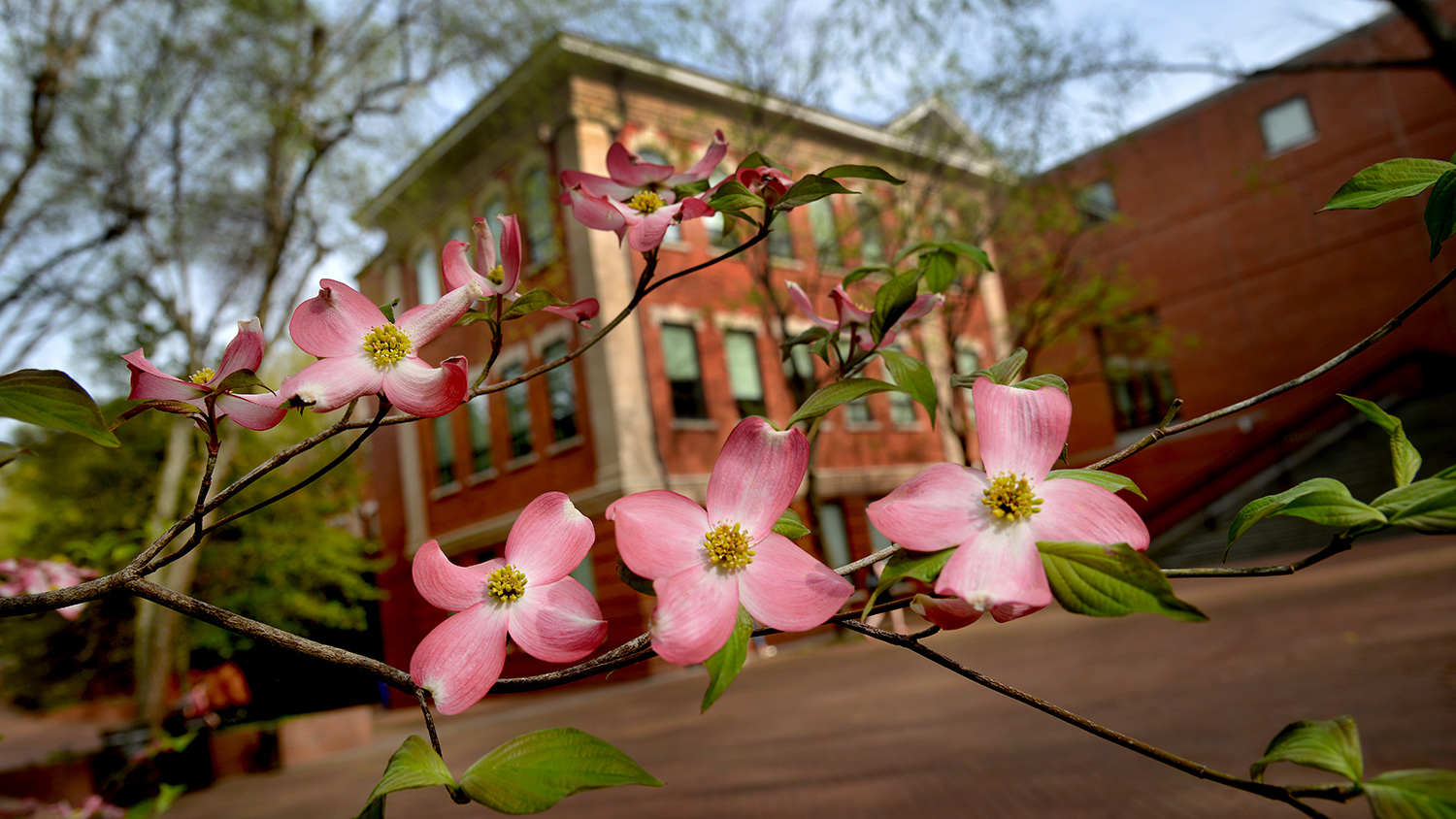Digital Humanities Projects Bring History to Life

Editor’s Note: Earlier versions of this article appeared in our print magazine, Accolades, and online.
Reading about history is one thing. Experiencing it for yourself is entirely another.
With innovative technology at their fingertips, NC State humanities scholars are creating new perspectives on significant events, places and traditions. Their work — freely available online and stretching across disciplines — aims to help both researchers and the general public more fully understand our past and inform our future.
Virtual Paul’s Cross Project
Re-creations of the sights and sounds at St. Paul’s Cathedral in the 17th century are allowing a richer look at public preaching and religious life in early modern London. English professor John Wall and a team of international scholars are responsible for the breakthrough.
The team is building on its award-winning 3-D visual and acoustic model of John Donne’s 1622 sermon at the cathedral by expanding its focus to the interior of the church.
The new project, funded by the largest National Endowment for the Humanities grant in NC State history, will broaden the 3-D model and help create open-source modeling software that other scholars can use.
Below, listen to a clip of Donne’s recreated Gunpowder Day Sermon:
NEH Chairman William Adams, who has lauded the team’s original Virtual Paul’s Cross Project, announced the new $324,000 grant for the Virtual St. Paul’s Cathedral Project during a recent visit to campus.
“The humanities in many ways are anchored in lived experience, which is why they are so important and so irreplaceable,” Adams said. “To see this project, which is so much about that dimension of things, is to me enormously impressive.”

Virtual MLK Project
Wall’s is not the only NC State project using technology to expand the boundaries of humanities research. By combining various forms of media into a collective visual display, another team of researchers hopes to immerse viewers in a speech from one of history’s great orators: Martin Luther King Jr.
Despite the significance of King’s 1960 “Fill up the Jails” speech, which marked the first time the civil rights leader called for direct nonviolent action, no recording of the original has ever been discovered. To more fully comprehend King’s address as an experience, a team led by communication professor Victoria Gallagher created an exhibit that allows viewers to see and hear it for themselves.
Combining archival photos with audio and video recordings from a re-enactment of the speech, the Virtual MLK Project team designed an audio model and visual exhibition for NC State’s James B. Hunt Jr. Teaching and Visualization Lab where visitors can immerse themselves in King’s speech.
Below, listen to an excerpt from the recreated speech as an audience member would have heard it from the church floor:

Victoria’s Lost Pavilion
Victoria’s Lost Pavilion, a virtual reconstruction of Queen Victoria’s Buckingham Palace garden pavilion, is also helping resurrect the past.
Scholars in English and architecture used historical data to build a 3-D model of the pavilion, a hub for the arts that was demolished in 1928. In addition to creating an architectural model of the Victorian time capsule, Department of English scholars Paul Fyfe, Tony Harrison, Sharon Joffe and Sharon Setzer are incorporating textual, historical and critical components.
The team plans to present its work on a permanent interactive website and a book project. For more information, visit go.ncsu.edu/victoriaslostpavilion.
The Power of BigDIVA

The power of BigDIVA Scrolling through thousands of years of search results can be an onerous task. A new tool created in part by NC State digital humanities scholars aims to help researchers sift more quickly and accurately through 15 centuries of data.
The Big Data Infrastructure Visualization Application, or BigDIVA, offers a visual interface for navigating scholarly, peer-reviewed humanities content, such as historical documents, images of art and artifacts, and any associated scholarly literature.
The system, created in partnership with Texas A&M University, displays results in an infographic format that is organized by category, such as journal articles or online digital collections. A color-coded interface that distinguishes each item’s access rights, genre, discipline and format allows users to navigate to a particular item and track their path along the way.
“Our goal in developing BigDIVA was to create a tool to help us explore our cultural heritage and facilitate scholarship in fields ranging from literature and religion to art and world history,” said Tim Stinson, an associate professor of English at NC State and one of the BigDIVA project’s creators. “And we think we delivered.”


